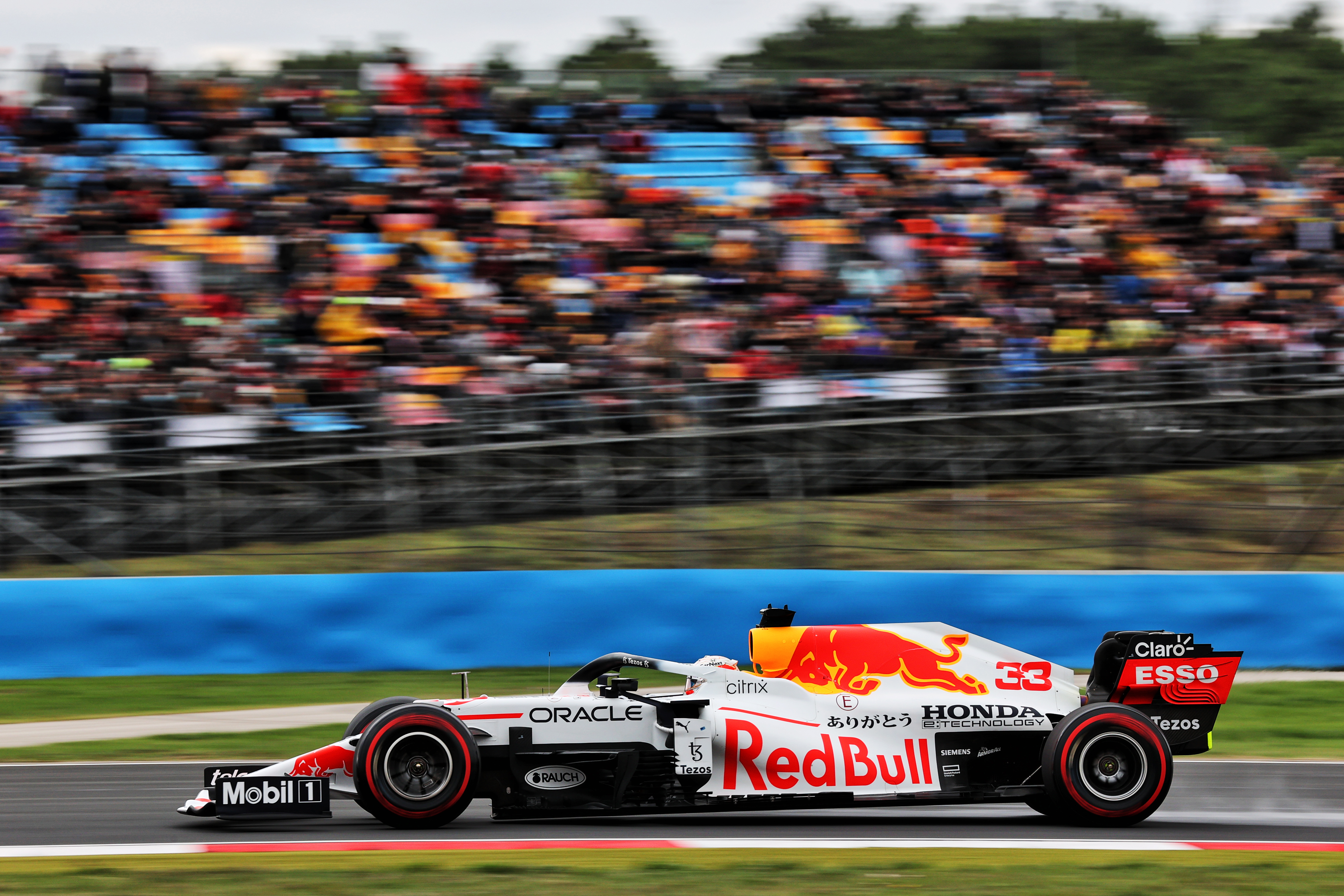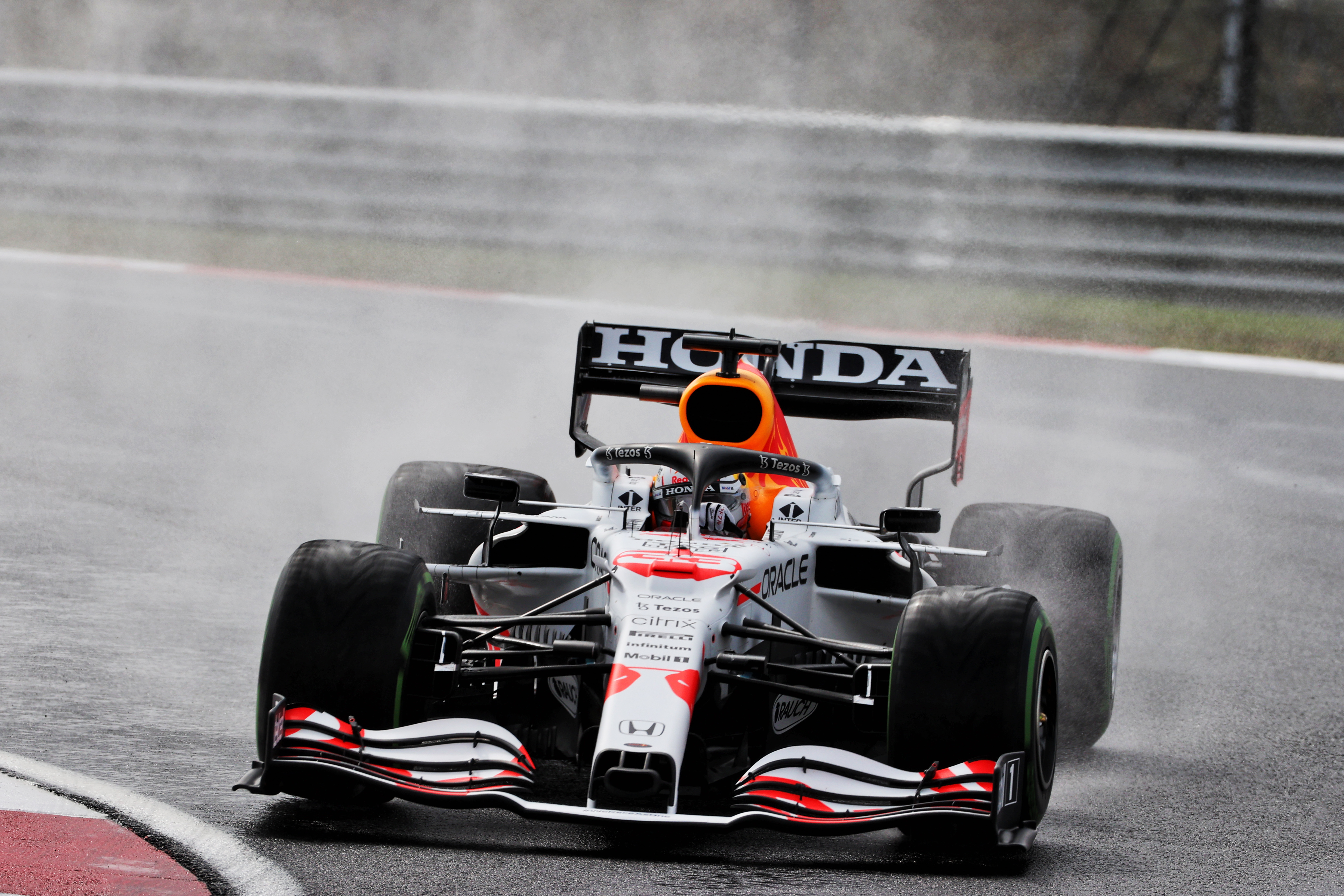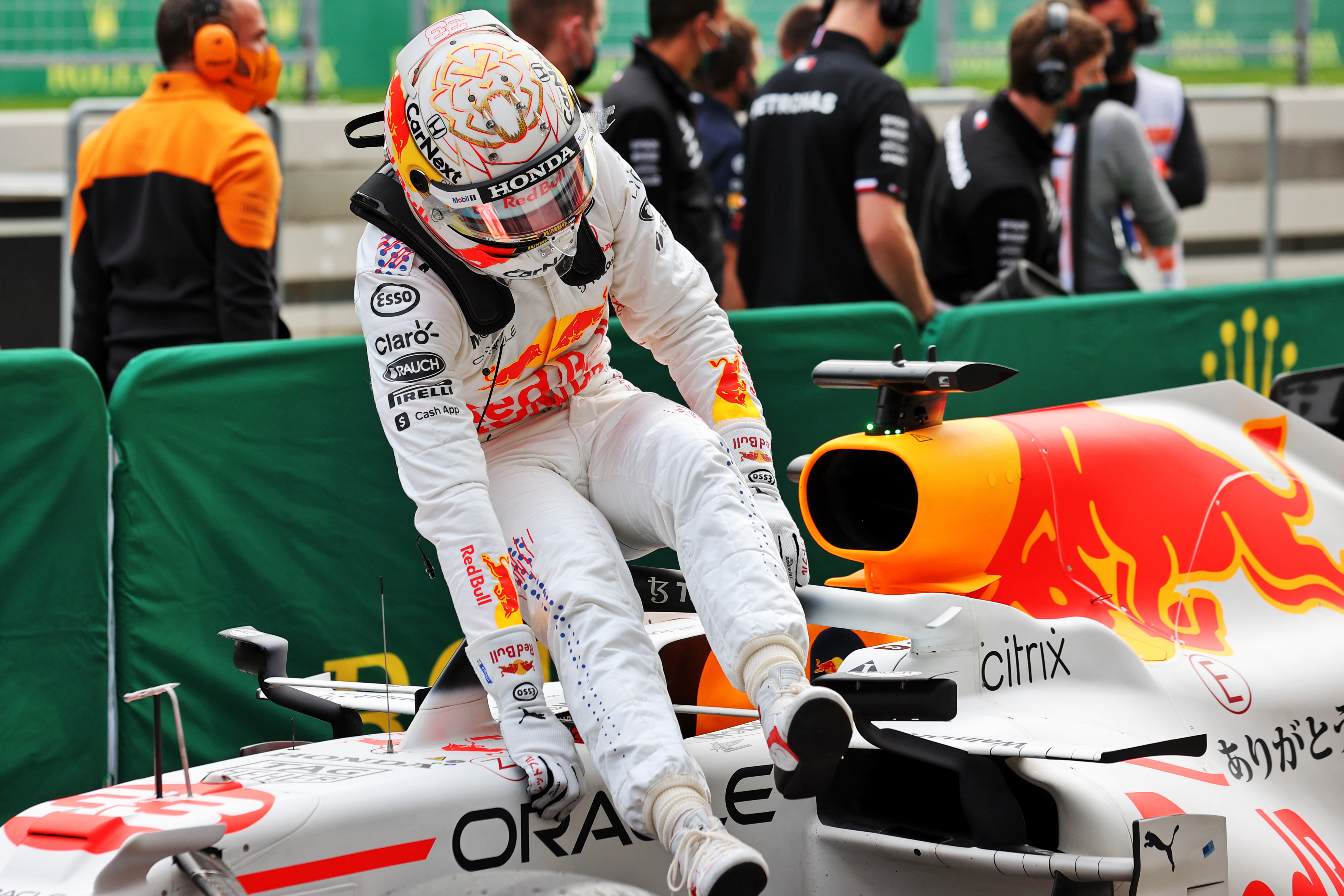Up Next

Max Verstappen being the driver he is, he pulled something of the hat to qualify his Red Bull-Honda on a net front row (after Lewis Hamilton’s grid drop) with third-fastest time in Turkish Grand Prix qualifying.
But even that wasn’t a given yesterday. After Hungary, this is the least competitive Red Bull has been all season.
What is behind a form loss that left Verstappen 0.328s slower than Hamilton, less than a tenth faster than stablemate Pierre Gasly’s AlphaTauri?
Both Verstappen and team-mate Sergio Perez are cagey about it, other than confirming the problem is one of understeer.

“Today was a little bit better,” said Verstappen, “but we never seemed to nail the balance all weekend, just couldn’t get it to work like we wanted to.”
The clues are in Verstappen’s insistence that the problem lies in how they are using the tyres.
“I think it’s Tarmac related,” he says, “and we’re not on top of that yet.”
Essentially the massive grip from the Istanbul Park surface has created a chassis balance problem that the Red Bull’s general concept has probably exacerbated.
“It’s a unique car,” says Perez when asked about his difficulties in general in matching the pace of Verstappen through this season. “It’s not at all like cars I have driven previously.”
He steers clear of getting specific on what those unique traits are, but they are to do with the car’s extreme high-rake aero philosophy.
It generates big downforce, but specifically the higher the rake at which a car can be made to work, the more aggressively-loaded the front end will be into slow corners.
The balancing point between downforce acting on the front and rear axles (what aerodynamicists call the centre of aero pressure) moves more dramatically forwards into slow corners on a high-rake car than a low-rake.
This is potentially fantastic news for the vehicle dynamicists because generically a Formula 1 car wants to understeer in slow corners and oversteer in fast ones just because of the way the aerodynamics work in combination with steering lock (as a slower corner requires more lock) and how the squaring downforce loads are acting upon the tyres at different speeds.

Having a way of enhancing the extent to which the aero balance moves forward at slower speeds helps get around that compromise. When slowing, a high-rake car rises more at the rear than a low-rake one, as the downforce loads bleed off.
This gives a greater angle of incidence to the underfloor and front wing, enhancing their ability to create downforce as the negative pressure beneath them is increased, hence the aero balance moving forwards.
How far you can go in this direction is to an extent limited by how comfortable the driver is with the feeling of rear instability into slow corners this forward-migrating aero balance gives.
Like nearly all the great drivers, Verstappen is very comfortable with levels of rear instability that are unnerving for those less gifted.
Red Bull’s aero philosophy has always been high-rake but Verstappen’s ease with the traits have over the years allowed the team to develop further in this direction – because the further the driver is able to go with it, the faster the car will be.
But beyond a certain point, it will tend to mean that a merely good driver will be slower than they would be with a less extreme concept of car. So the gap between Verstappen and team-mates such as Gasly, Alex Albon and Perez is even bigger than it would be in a less extreme (but ultimately slower) car.
Another downside is that the sweet spot where the tyres generate their optimum slip angle (the difference between the direction of travel and where the tyre is pointing) becomes narrower. The tyres grip best at a slip angle of around 3%.

As Gary Anderson explained in a reply to a reader in yesterday’s Friday analysis story, the rear tyre can only begin to build up cornering force once the front tyre has been steered. If the front tyre doesn’t generate its optimum slip angle as it is steered, then the rear tyre will not reach its optimum slip angle either.
The sweet spot is where turning the steering induces the perfect slip angle for the front tyres to quickly load up the rear, but not so quick that it overloads the rear. The more the aero balance is moving forwards, the smaller that sweet spot becomes – and the greater variation there is in that sweet spot between slow corners and fast.
So a high-rake car will tend to be more critical in the choice of wing level. The downforce acting upon the rear axle will help prevent the rear tyres from becoming overloaded. The more resistant they are to that, the more aggressively the car can be steered.
But the greater the grip of the track surface, the more the rear tyres will be resistant to achieving the optimum slip angle. Surface grip plays an essential part in defining the optimum wing level on any car, but it tends to become more critical on a high-rake car.
Any increase in track grip will generally result in more understeer as the rear tyres are bigger and more powerful than the front. A grippier surface increases front and rear tyres by the same percentage of their capacity, but not the same total. It’s the same in proportion but bigger in number at the rear – ie it increases grip by more at the rear than the front. A lower rear wing level will then be more appropriate. More so with a high-rake car than a low-rake one.
Also more so with a soft compound tyre than a harder one. A further clue here came with Perez’s Q3 performance where on brand new softs he was barely able to lap any faster than he had on used softs.

“I just picked up a lot of rear grip,” he reported, “which gave me too much understeer.”
For those believing Red Bull has just been made to look less competitive because Mercedes has progressed, the numbers below refute that totally.
They show that Mercedes’ advantage over its other rivals is actually less here than the average of the season to date – ie the field has actually closed up slightly on Mercedes here – but the field has made far more drastic gains to Red Bull.
Mercedes
Qualifying speed advantage over Ferrari in season to date: 0.65%
Qualifying speed advantage over Ferrari at Istanbul: 0.5%
Qualifying speed advantage over AlphaTauri in season to date: 0.8%
Qualifying speed advantage over AlphaTauri at Istanbul: 0.5%
Qualifying speed advantage over Alpine in season to date: 1.2%
Qualifying speed advantage over Alpine atIstanbul: 0.7%
Red Bull
Qualifying speed advantage over Ferrari in season to date: 0.65%
Qualifying speed advantage over Ferrari at Istanbul: 0.1%
Qualifying speed advantage over AlphaTauri in season to date: 0.8%
Qualifying speed advantage over AlphaTauri at Istanbul: 0.1%
Qualifying speed advantage over Alpine in season to date: 1.2%
Qualifying speed advantage over Alpine at Istanbul: 0.3%
Interestingly, the one team that is even further off its average than Red Bull is McLaren.
And here’s what Lando Norris said about it: “The combination of how you have to drive our car, with this surface and the soft tyre is not a good one. It’s a bit better on the hard and medium tyres. We’ve had it with this car before and it hasn’t really surprised us.”

Sounds a lot like the Red Bull…
The much higher than expected grip of Istanbul Park looks to have more adversely affected the balance of the Red Bull than any other car.
So why did the team not simply reduce the wing level – by running the lower-downforce spoon-profile wing tried by Perez on Friday (the one used by Verstappen from the back of the grid at Sochi) and with which Perez was quicker than Verstappen then?
Probably because that abrasive track surface looks set to give a very high tyre degradation during the race. The best way of minimising tyre deg is to use more downforce.

With Hamilton taking a 10-place grid penalty, the likelihood was always that Verstappen could get onto the front row, even with the qualifying compromise a too big rear wing imposed upon the car.
Then from the front row, he would have a car which might be able to compete with Valtteri Bottas’s faster-qualifying Mercedes through being better on the tyres. With the lower wing there’s no way it would have been able to do that.
Furthermore, the problem is at its maximum on a new soft tyre. Verstappen probably won’t be using the soft tyre in the race and the balance will improve as the grip of his mediums and hards lessens.
So in summary of what is a highly complex and nuanced subject, Verstappen may be far more competitive in the race than in qualifying.






